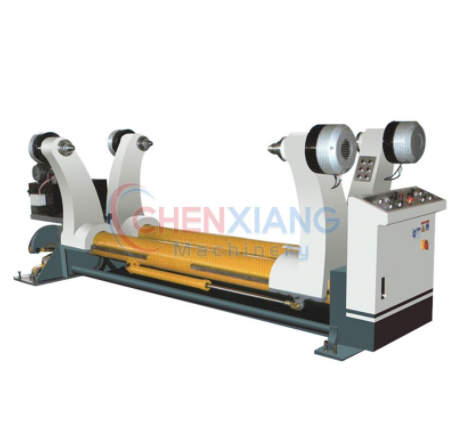In the world of paper and cardboard production, hydraulic mill roll stands play a crucial role in ensuring smooth and efficient operations. These robust machines are designed to hold and control the position of the mill rolls during the manufacturing process. In this article, we will delve into the inner workings of a hydraulic mill roll stand and explore how it functions to contribute to the overall productivity of the industry.

Understanding the Basics:
A hydraulic mill roll stand consists of a sturdy frame, a hydraulic system, and various mechanical components. Its primary purpose is to hold and support the rolls of paper or cardboard, allowing for continuous and precise unwinding during production. This equipment is commonly used in applications such as corrugated box manufacturing, tissue paper production, and other paper processing industries.
The Hydraulic System:
At the core of the hydraulic mill roll stand is the hydraulic system, which provides the necessary power and control for its operation. The system typically includes a hydraulic power unit, cylinders, valves, and hoses. The hydraulic power unit supplies hydraulic fluid under pressure, allowing the cylinders to actuate and control the movement of the mill rolls.
Roll Position Control:
The hydraulic system enables precise control of the roll position within the mill roll stand. By adjusting the hydraulic pressure in the cylinders, the operator can raise or lower the rolls as needed. This capability is vital for maintaining tension and alignment during the unwinding process, ensuring consistent product quality and preventing issues such as web breaks or misalignment.
Automatic Brake System:
To enhance safety and prevent uncontrollable roll rotation, hydraulic mill roll stands often incorporate an automatic brake system. This system utilizes brakes or clutches that can be engaged to halt the rotation of the rolls. This feature is particularly important during roll changes or when stopping the production line to avoid accidents or damage to the machinery.
Roll Loading and Unloading:
Hydraulic mill roll stands also offer convenient roll loading and unloading mechanisms. The stands typically feature a roll-loading rail or trolley, allowing operators to easily maneuver heavy rolls into position. Hydraulic systems can assist in lifting and lowering the rolls, reducing manual effort and increasing efficiency during roll changes.
Integration with the Production Line:
Hydraulic mill roll stands are often integrated into a larger production line. They can be synchronized with other equipment such as corrugators, printers, or slitters to ensure seamless operation and material flow. This integration enables efficient processing, minimizes downtime, and maximizes overall productivity.
Maintenance and Safety Considerations:
To keep a hydraulic mill roll stand operating optimally, regular maintenance is crucial. This includes inspecting hydraulic components, ensuring proper lubrication, and addressing any potential issues promptly. Additionally, operators must follow safety protocols, such as wearing appropriate personal protective equipment, understanding emergency shutdown procedures, and receiving proper training to operate the equipment safely.
Conclusion:
Hydraulic mill roll stands play a vital role in the paper and cardboard industry, providing stability, control, and efficiency during the manufacturing process. By utilizing hydraulic power and precise positioning mechanisms, these machines enable the unwinding of rolls with accuracy and consistency. Understanding the inner workings of hydraulic mill roll stands helps us appreciate their significance in ensuring high-quality production and optimizing overall operational efficiency in the paper processing industry.




Comments
Please Join Us to post.
0